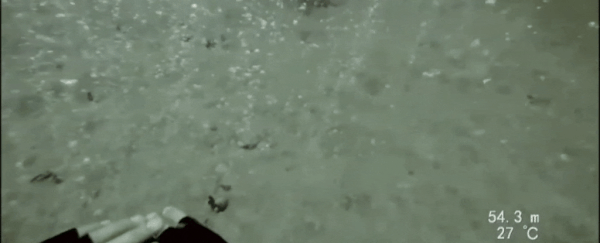There are some awe-inspiring secrets hiding under the ocean, and scientists diving off the coast of the Philippines have just found a new one. Below the waves, 60 metres (200 feet) down, the ocean floor is bubbling like champagne… with vast amounts of carbon dioxide.
For once, humans aren't the cause of these emissions. The region - named Soda Springs - acquires its fizz from a geological source. It's also really close to a thriving coral reef system, which means the site could be helpful for studying how marine ecosystems adapt to climate change.
"These high CO2 environments that are actually close to thriving reefs, how does it work?" said geoscientist Bayani Cardenas of the University of Texas at Austin.
"Life is still thriving there, but perhaps not the kind that we are used to. They need to be studied."

The site is located in a stretch of water called the Verde Island Passage, between the islands of Luzon and Mindoro. It's rich with marine biodiversity, and an important conservation target. Many animals make their homes amid the coral reefs.
Cardenas and his team were diving in the area to try to study the effects on the ocean ecosystems of groundwater from nearby islands. There, they discovered Soda Springs - not created by any human cause, but a nearby volcano, venting through cracks in the ocean floor.
"It's really a big part of the ocean that is left unexplored because it's too shallow for remotely operated vehicles and is too deep for regular divers," he explained.
It's not a cause for climate concern, since the area has likely been bubbling for a very long time, maybe even thousands of years; but Soda Springs could be the highest concentration of carbon dioxide ever found in nature.
Measurements revealed concentrations between 60,000 and 95,000 parts per million, the higher end of which is up to 200 times higher than atmospheric concentrations of carbon dioxide. That level quickly falls away as the gas is diluted in the surrounding waters, but even so, the concentrations remain higher than average.
This, the team said, has interesting implications for studying the way marine life adapts to higher levels of CO2.
And they got some results on their groundwater study, too. The researchers looked for a radioactive isotope of radon that is found in local groundwater, but not seawater, and found hotspots seeping groundwater into the ocean all along the coast of the island they were studying.
This is a big deal, because it could represent a previously unaccounted-for means of transporting human pollutants into the sea.
"It's an unseen flux of water from land to the ocean. And it's hard to quantify. It's not like a river where you have a delta and you can measure it," Cardenas said.
"This [study] really widens our knowledge on what happens in these environments and has shown that these vents can change seawater chemistry over large areas."
The research has been published in Geophysical Research Letters.
